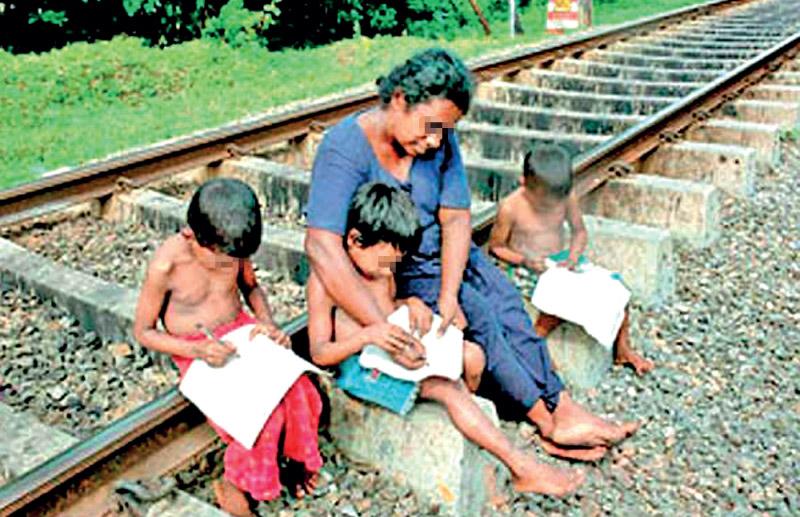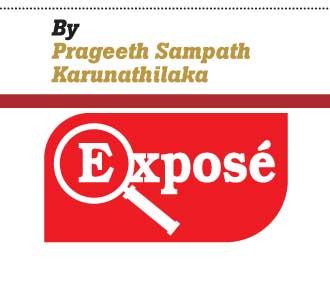23 May 2023 - {{hitsCtrl.values.hits}}
|
1.4 million schoolchildren are affected by malnourishment Malnutrition is severe in districts such as Ampara, Anuradhapura, Polonnaruwa, and Nuwara Eliya The absence of a proper agricultural policy in the country has also contributed significantly to the worsening state of malnutrition |
|
Corn production in 2022 plummeted by 65 percent, severely impacting the production of eggs and poultry within the country Merely 0.2 percent of the working population in Sri Lanka possesses the means to afford goods amounting to $1.90 per day At present, 43 percent of children under the age of five in Sri Lanka suffer from malnutrition |

The latest report from the Central Bank of Sri Lanka reveals that over 40 percent of the country’s population has reduced their allocation towards education and health
 Based on recent reports from the Central Bank, the World Bank, the World Health Organization, and the Food and Agriculture Organization, Sri Lanka is currently facing a deeply distressing situation, with children being the most affected. A concerning situation revolves around the future of Sri Lankan children who are grappling with malnutrition. In response to this issue, K. B. Gunaratne, former Director of Agriculture, said that there would be a risk of severe illness among children in the future.
Based on recent reports from the Central Bank, the World Bank, the World Health Organization, and the Food and Agriculture Organization, Sri Lanka is currently facing a deeply distressing situation, with children being the most affected. A concerning situation revolves around the future of Sri Lankan children who are grappling with malnutrition. In response to this issue, K. B. Gunaratne, former Director of Agriculture, said that there would be a risk of severe illness among children in the future.
The latest report from the Central Bank of Sri Lanka reveals that over 40 percent of the country’s population has reduced their allocation towards education and health. This is due to the financial burden caused by food expenses. Consequently, the education system has been severely affected. The health and wellbeing of children have been neglected. The nutrition intake has been reduced as well making them vulnerable to fall prey to malnutrition. Gunaratne emphasised that this has evolved into a critical socio-economic problem.
 ‘Given this background, it is imperative to develop proper plans and strategies to uplift the agricultural sector in the country
‘Given this background, it is imperative to develop proper plans and strategies to uplift the agricultural sector in the country
“At present, 43 percent of children under the age of five in Sri Lanka suffer from malnutrition. 1.4 million schoolchildren are also affected by malnourishment. This issue is severe in districts such as Ampara, Anuradhapura, Polonnaruwa, and Nuwara Eliya. One-third of schoolchildren in these districts lack access to proper food and one-fifth of all children suffer from malnutrition. Over the past two years, there has been a 75 percent increase in the average family’s expenditure on both food and miscellaneous items. Some middle-class families have been pushed into poverty, and already impoverished families are sinking further into extreme poverty. As a consequence, the problem of malnutrition has worsened,” Gunaratne added.
|
“2.5 million individuals within our population are currently grappling with poverty. The distressing state of our country is evident. To address this situation, it is imperative that we prioritise agriculture and strive to establish food security”
|
The absence of a proper agricultural policy in the country has also contributed significantly to the worsening state of malnutrition. According to a Central Bank report, towards April 2023, the rate of inflation read as 35.3 percent, with food inflation at 30.6 percent. The country’s gross domestic product (GDP) had experienced a decline of 4.6 percent in 2022, followed by a further drop of 7.8 percent in 2023. In 2022, the country witnessed a decline of 1.8 million metric tons in paddy production which led to the importing of 783,000 metric tons of rice at a cost of 87,500 million rupees. Corn production in 2022 plummeted by 65 percent, severely impacting the production of eggs and poultry within the country. As a result, 10 million eggs had to be imported from India. Not only children, but also nursing mothers and pregnant women have also faced significant nutritional deficiencies, according to Gunaratne.
 Furthermore, the World Food Organization initiated efforts to provide a sum of 20,000 rupees to impoverished families. However, the government institutions failed to implement an effective system to distribute the funds to the intended recipients
Furthermore, the World Food Organization initiated efforts to provide a sum of 20,000 rupees to impoverished families. However, the government institutions failed to implement an effective system to distribute the funds to the intended recipients
In the past, a substantial amount of vegetables, fruits, sugar, sweets, and spices that could have been produced within the country was imported. According to data from the Department of Agriculture as much as over 800 billion rupees was spent on these imports; solely in the year 2022. Specifically, 100 billion rupees were allocated for vegetable imports, 75 billion rupees for sugar and sweets, 130 billion rupees for grain-related product, 65 billion rupees for dairy food, 15 billion rupees for beverages, 12 billion rupees for fruits, and 40 billion rupees for spice imports, according to Gunaratne.
Ensure food security
“Efforts must be taken to ensure that the provision of basic food to the public falls within the Government’s responsibility. It is also the Government’s duty to take measures to ensure food security. Importing items that can be cultivated within the country is causing people to disconnect from the agricultural sector even more,” he said. Gunaratne added that if this situation continues, it will exacerbate the country’s future food security concerns.
|
|
He said that Sri Lanka ranks 4th in the world in food inflation and 6th regarding child malnutrition. “This is an unfortunate reality. “In April 2021, Sri Lanka encountered a severe food crisis when the import of chemical fertilizer was halted and we continue to endure the repercussions even at present. By the year 2021, 12.7 percent of Sri Lanka’s population was classified as impoverished. However, due to the economic crisis, the number of impoverished families increased to 26 percent by 2022. This figure further escalated to 37 percent by 2023. Thereby 2.5 million individuals within our population are currently grappling with poverty. The distressing state of our country is evident. To address this situation, it is imperative that we prioritise agriculture and strive to establish food security,” he said.
 ‘By the year 2021, 12.7 percent of Sri Lanka’s population was classified as impoverished. However, due to the economic crisis, the number of impoverished families increased to 26 percent by 2022. This figure further escalated to 37 percent by 2023’
‘By the year 2021, 12.7 percent of Sri Lanka’s population was classified as impoverished. However, due to the economic crisis, the number of impoverished families increased to 26 percent by 2022. This figure further escalated to 37 percent by 2023’
The government made a plan to provide free 20-kilogram bags of rice to 2 million people in the country for a duration of two months. However, Gunaratne added that there is currently no plan in place for the remaining 20 million individuals.
“Furthermore, the World Food Organization initiated efforts to provide a sum of 20,000 rupees to impoverished families. However, the government institutions failed to implement an effective system to distribute the funds to the intended recipients. As reported in the Sunday Lankadeepa newspaper the funds were disbursed to moderately well-off families instead of those living in poverty. This incident underscores a clear lack of understanding among certain officials in our country regarding the true nature of poverty. Merely 0.2 percent of the working population in Sri Lanka possesses the means to afford goods amounting to $1.90 per day. Additionally, the unemployment rate stands at 5.2 percent. 7 out of every 1,000 children born in Sri Lanka do not live to see their 5th birthday. It is crucial to accurately identify and account for individuals falling below the national poverty line, and it is equally important to select suitable individuals who can effectively address their needs. In February 2022, the poverty line in terms of monthly income stood at Rs. 5,972, but within a short span of 10 months, it increased to Rs. 13,777 by December 2022. Therefore when making critical decisions, the prevailing economic crisis should be taken into consideration,” Gunaratne added.
 ‘7 out of every 1,000 children born in Sri Lanka do not live to see their 5th birthday. It is crucial to accurately identify and account for individuals falling below the national poverty line, and it is equally important to select suitable individuals who can effectively address their needs’
‘7 out of every 1,000 children born in Sri Lanka do not live to see their 5th birthday. It is crucial to accurately identify and account for individuals falling below the national poverty line, and it is equally important to select suitable individuals who can effectively address their needs’
Simultaneously, as of 2022, the poverty rate in Sri Lanka has surged to 25.6 percent. This reveals that ¼ of the country’s population requires subsidies to meet their basic needs. The poverty will persist at a 25 percent level in the future, posing numerous threats to households’ livelihoods. Presently, the nation’s economy remains in a negative state, and this situation is expected to remain until 2023-2024, further worsening the issue of poverty. “Given this background, it is imperative to develop proper plans and strategies to uplift the agricultural sector in the country. Failure to do so will not only perpetuate the problem of malnutrition, but also ensure that poverty continues to affect our country indefinitely,” Gunaratne added.
02 May 2024 32 minute ago
02 May 2024 2 hours ago
02 May 2024 4 hours ago
02 May 2024 5 hours ago
02 May 2024 6 hours ago